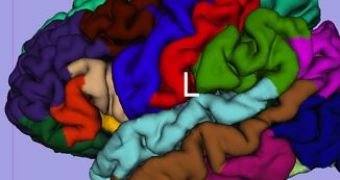“The Whole Brain Catalogue” is the name of a new project presented at the SIGGRAPH interactive technology and computer graphics conference, that aims to built a detailed map of the brain's complex structure.
Scientists presented the way that a 3D model of a brain could be a huge step in neurological research. This project gathers data from MRIs, pictures of stained neurones and theoretical diagrams of the brain's circuits, and puts it all together for doctors, scientists and 3D animators to fully understand it. Specialists then can add information so that the model becomes more and more complete, at each scale.
Another positive thing is that even before the completion of the project, scientists could use the information to make computer simulations rather than live-human testing. This would give a high number of experiments and, at the same time, drastically reduce time and variables of studies and costs.
Stephen Larson, a neuroscience researcher at the University of California, San Diego working on the Whole Brain Catalog, said: “My dream is that you can built these simulations at any level of resolution. The key is to have something smaller than the brain that is still big enough for simulations.”
This project is one of the most complex scientists ever started, as its goal of mapping out all the brain's connections is a very difficult task. Larson says that usually the brain is compared to the human genome – the name of the entire series of human DNA – and so its map has been nicknamed the “connectome”.
He said that the only way of completely understanding the connectome is through a very complete and explicit 3D model, that shows every molecule, neuron or wrinkle. “The brain is complex because it isn’t rectilinear like the world we live in, which makes it counter intuitive,” Larson added for TechNewsDaily.
This scientific project is only at the beginning of the mapping process and it seems it has some trouble advancing. One of the main reasons is that most of the data comes in a high variety of formats, and there is no automatic process that could unify the different types of information. Also, as some regions of the brain get more of the researchers' attention, there are other areas that remain void. This downside is also an advantage for the project, as it shows what are the current interests in neurological research and could allow projecting future studies on different parts of the brain.

 14 DAY TRIAL //
14 DAY TRIAL //